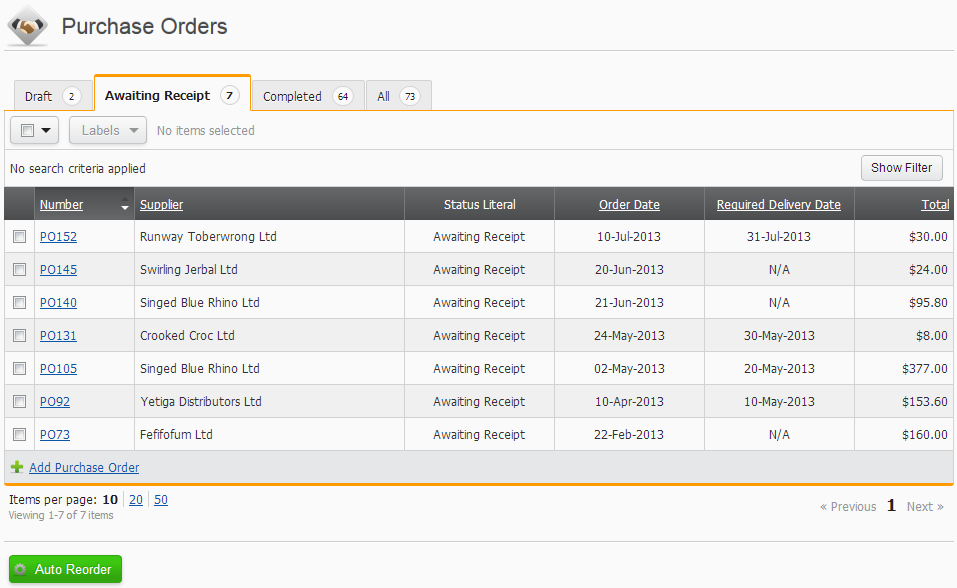The Purchase Order List screen displays all your purchase orders and can be found under the Purchases menu.

You can view a purchase order by selecting it from the list.
You can sort the list by selecting any underlined column header. An arrowhead depicting an ascending or descending sort order will be displayed above the sorted column.
Navigating your orders
You can choose to view either 10, 20 or 50 orders at a time, by selecting the Items per page link at the bottom of the list.
![]()
You can also view the next set of orders or a nominated page by using the other set of links at the bottom of the list. Including, specifying the exact page set to view by typing a number into the blank text field (only available when 5 or more page sets exist).
An up arrow at the bottom also allows you to quickly to go to the top of the screen.
Purchase order tabs
The Purchase Order screen has a tab for each order status, as well as an All tab. When you select each tab, you will only see the orders that correspond with that order status. The tabs also display a count for the number of orders that are in each status. Be aware that these counts will only update when you refresh the screen or return to the screen. Alternatively, each tab will update independantly when you select it.
![]()
Label your orders
You can apply labels to multiple orders at a time by first either using the Selector drop-down just above the Purchase Orders List or by individually selecting the checkboxes in the Purchase Order List and then selecting the Labels button to reveal a list of purchase order type labels to select. Just remember to select Apply.
Searching your orders
Selecting the Show Filter button located above the list will display a set of useful search options. Remember to apply the search once you have entered all your search criteria. Watch out for the tab you currently have selected when you view your search, because each tab reports different statuses.

Be aware that any applied searches will persist during the logged in session.
You can also use the search to find words or codes that you can only partially remember, by using wildcard search characters to search on some of the fields. These include the underscore symbol and the percentage symbol. Use the underscore to search any single character matches. Use the percentage to search on any combination of characters. Eg, If you wanted to search on a word/code like Sandbox, then here are some of the plethora of examples which will work: sand%, s%x, %sandbox%. If you know most of the word/code you are looking for, except for a single character, then try some of these examples: s_ndbox, sand_ox, s___bo_, _and__x.